The Golden Age of Bigfoot Movies
You didn't know there was a Golden Age of Bigfoot Cinema? Well behold, ye of little faith, this furry goodness.
Reclusive or not, Bigfoot has been lurking around the movie landscape for a very long time. Legends of a reclusive, large, hairy, bipedal hominid have been part of the folklore of nearly every culture on the planet for centuries now. There’s the Yeti in the Himalayas of course, while the Australian outback boasts the Yowie, north central India has Kala Bandor, and versions of the enigmatic man-beast can be found in Russia, the Middle East, Southeast Asia and South America.
Few regions on earth, however, can claim as many variants of what we’ll collectively call Bigfoot as North America. The Pacific Northwest and Canada have Sasquatch, the Southeast has the Skunk Ape (which goes under different regional names), and south central Wisconsin has a recent addition in the form of the Beast of Bray Road (which is more lupine than simian). Virtually every state in the nation can claim at least one Bigfoot sighting. He does get around. There have even been sightings on Staten Island, although having spent my fair share of time there, I suspect it was merely one of the locals.
Whether or not Bigfoot actually exists is irrelevant, considering even people who don’t believe in him know an awful lot about him. Given how pervasive he and his assorted relatives have become in our collective consciousness, it’s also hardly shocking Hollywood would try to get in on the game. Casting Bigfoot as a movie monster is a helluva lot easier and cheaper than coming up with a believable alien or sea monster, right? All you need are some trees and an ape-man suit and you’re good to go, which may explain why there are over a hundred Bigfoot movies out there, ranging from horror films to comedies to docudramas.
Now, discounting simple “Ape Man on the Loose” pictures like The Ape, The Ape Man, The Neanderthal Man, and Monster on the Campus, true Bigfoot cinema to date can be broken down into three clear eras.
When Sir Edmund Hillary ascended Everest in 1953, there was understandably a good deal of hype surrounding not only the climb, but Nepal’s culture and, of course, the Abominable Snowman. Filmmakers from around the world grabbed that Yeti and ran with it, resulting in what we’ll call the First Era.
The great and under-appreciated W. Lee Wilder, always a few short minutes ahead of his time, was first out of the blocks with The Snow Creature in 1954. Still a personal favorite from a favorite director, the story concerns a scientific expedition into the Himalayas which stumbles across a small Yeti community. Naturally being scientists, they decide to bring one home to Los Angeles with them. It’s far more complicated and interesting than most online reviews would have it, but I’ll leave it at this: it’s one of the few films of this type with the mindfulness to take a ten-minute break from the excitement as customs officials argue over how to properly classify an abominable snowman before allowing him into the country.
Three years later in 1957, Nigel Kneale wrote his own deeply philosophical take on the legend with The Abominable Snowman, which was originally broadcast as a live production for the BBC. Not long afterward Kneale teamed with director Val Guest for a lavish film version at Hammer Studios and starring Peter Cushing, Forrest Tucker, and an unexpectedly sympathetic creature. By the end, despite the body count, we learn the real monster here isn’t the one with fur and claws.
Toho’s Ishiro Honda offered his own interpretation in 1958 with the gorgeous Jû jin yuki otoko. Sadly, as so often happened back then, his film was savagely butchered by the American distributor. Released as Half Human, the final result, complete with inserted scenes featuring John Carradine and an inescapable VO track, almost plays like a trailer for the original film, but nothing more. You can sense there’s an amazing film in there someplace, but likely one we’ll never see as the picture has been labeled “racist” for reasons I’m not real clear on.
That same year also saw the release of the forgettable weirdie, Teenagers Battle the Thing, which was interesting at the time for not being a yeti film, but a proto Bigfoot film. A group of archaeology students stumble across the remains of a prehistoric humanoid monster, only to learn the hard way they weren’t exactly “remains” after all. It was more closely related to 1953’s The Neanderthal Man than any Sasquatch movie, and in fact the name “Bigfoot” never comes up, but there’s a reason for that.
A decade’s worth of silence followed on the Bigfoot Cinema front, and interestingly the Yeti films of the 1950s laid no groundwork whatsoever for what would follow. The Himalayan legend was simply too specific to be pushed much further.
Although the legend of a hulking hairy creature living in the woods had been around long before the first European settlers arrived, it wasn’t until 1958 that people in the suburbs started to hear about it. In August of that year, one of the men working for Ray Wallace’s construction company in Northern California found a mysterious set of enormous footprints encircling his bulldozer. A local newspaperman not only jumped on the story, but coined the name Bigfoot as well. After that, things went viral, albeit in an Eisenhower era sort of way.
Then in 1967, along came the Patterson-Gimlin footage. The shaky, minute-long bit of film purported to show an actual Bigfoot standing near a creek bed in Northern California before nervously striding back into the woods. The moment that footage hit the news, sasquatch dove head long into pop culture and the second wave of Bigfoot films—what I call the Golden Era—was underway. Here are a few notable entries.
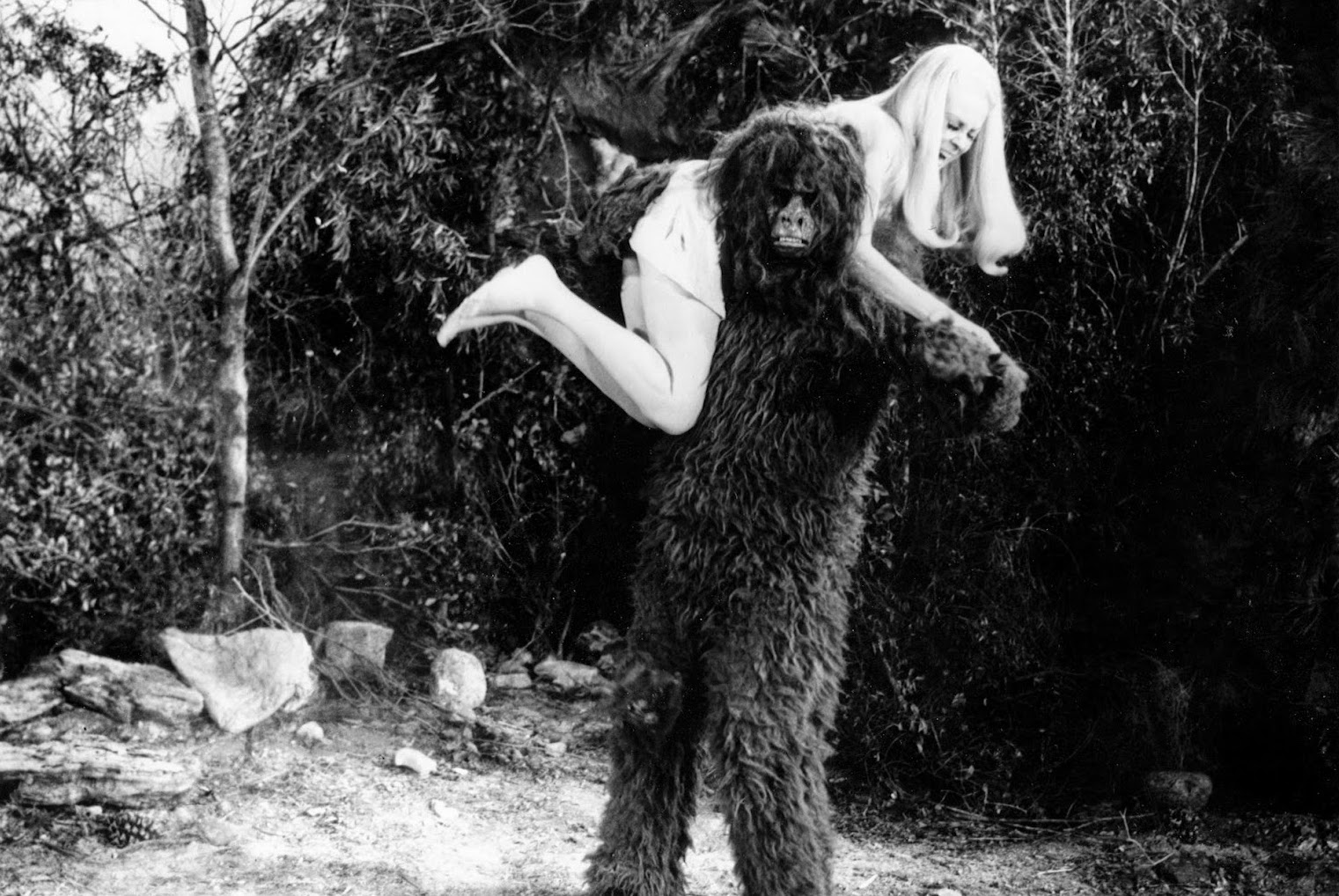
Bigfoot (1970)
Written and directed by Robert F. Slatzer, this seedy but fun bit of low-budget genre-mixing starred John Carradine, Doodles Weaver, and a bunch of the assorted producers’ relatives. It played a few grind houses, but for the most part came and went unnoticed. As the first true Bigfoot film, it remains well worth a look. Two years before this, Slatzer had written and directed a cheap biker film, and now with Bigfoot mania sweeping the country, he decided to cash in by making another biker film, but this time with a Bigfoot angle. When the nubile young women of a small Northern California town start disappearing, the locals begin whispering about Bigfoot. A bunch of forest rangers had reported seeing some weird shit out there in the woods, after all. So as the local sheriff tries to keep everyone calm and squash those silly monster stories, the members of a biker gang take it upon themselves to find the nubiles and, um, save the day.
I don’t want to give too much away about this first, if forgotten, foray into Bigfoot Cinema proper, but some of the ideas at play here would be plundered by a few other pictures down the line, from a Bigfoot-themed softcore shorts to Bobcat Goldthwait’s 2015 venture into Bigfoot territory, Willow Creek.
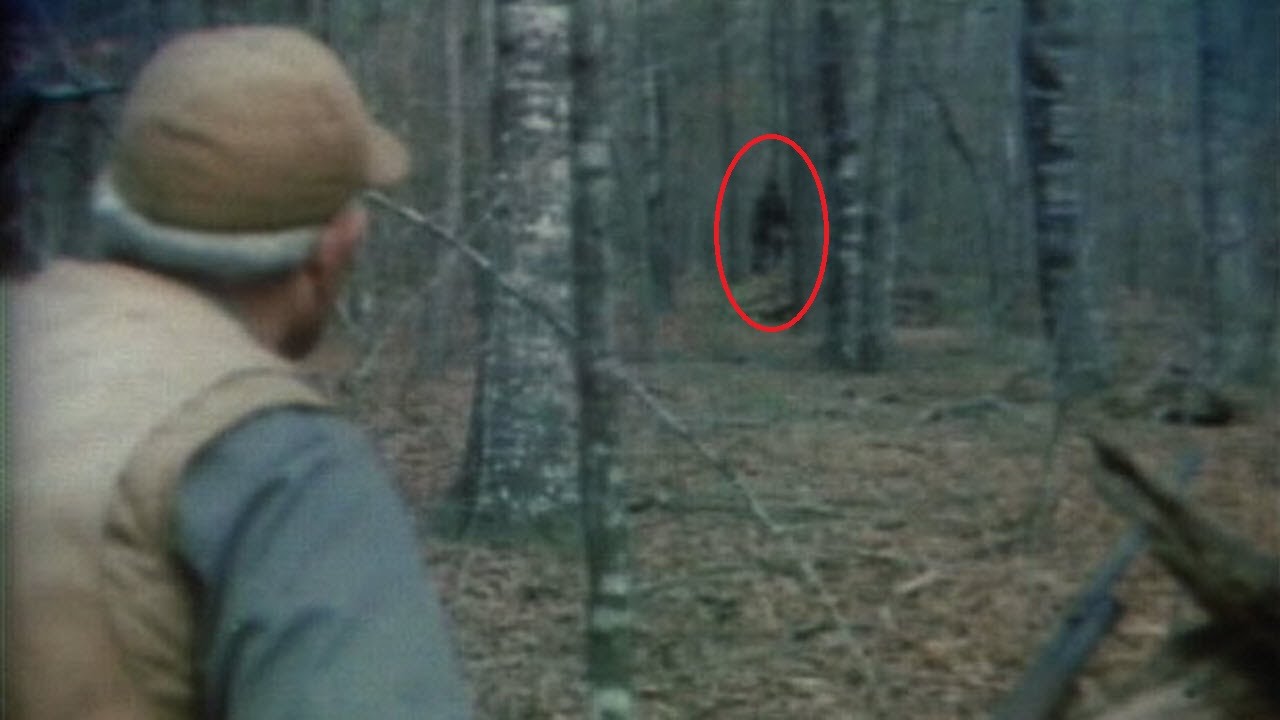
The Legend of Boggy Creek (1972)
Too often erroneously cited as the first of the Bigfoot movies, Boggy Creek nevertheless deserves our respect for the influence it would have down the line, even if it was a pretty crappy movie. Looking at it today, Charles B. Pierce’s no-budget faux-documentary about a three-toed skunk ape known as the Fouke Monster lurking around the woods of Texarkana is dull, inept, less than suspenseful, and offers no payoff. More aggravating, the non-actor “witnesses” come off like incompetent local actors trying to play “real people” and coming up short.
But the film was single-handedly responsible for laying out any number of the standard tropes of the subgenre, from the excruciating folk rock theme song about nature to the endless shots of trees, to the creature in question’s predilection for throwing rocks, no matter where in the country he happens to be.
For all its faults, in 1972 it was a massive drive-in hit, bringing in an estimated $20 million. The Blair Witch Project, Christopher Guest’s mockumentaries, and even a few entries in the latter half of the Golden Era owe Pierce a debt of gratitude, even if his monster exists as nothing more than a collection of sound effects.
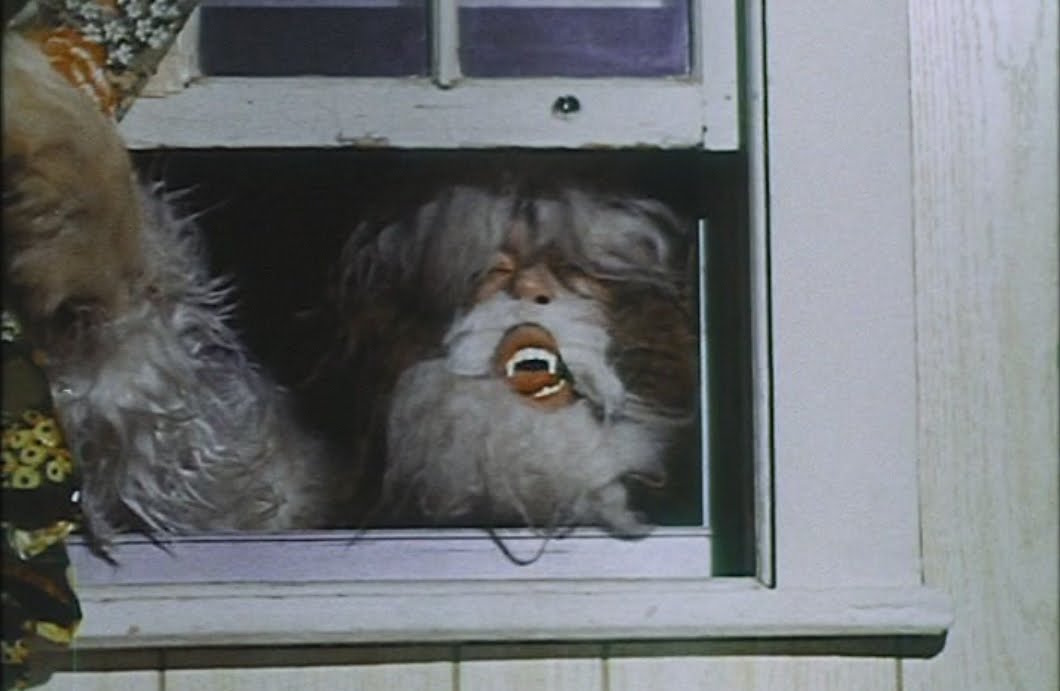
Shriek of the Mutilated (1974)
Mike Findlay’s low-budget stab at Herschell Gordon Lewis territory is kind of a stretch here for a number of reasons, but what the hell? Somehow, it seems, a Yeti has found its way from Nepal to, I’m not real sure—Utah, maybe? Whatever the case a community college anthropology professor decides to take a few students on an expedition to find it. He’s tried this sort of thing before with less than stellar results (only he and one other student survived), but second time’s the charm, right? Given the, um, Yeti has apparently taken up residency on a friend’s remote estate, they’ll at least have a place to stay while they’re looking.
If you can’t guess where this one’s headed, you need to see a lot more splatter films. We do get a few brief appearances of a supposed white-furred Yeti that’s pretty abominable, so there you go. It’s much gorier and more action-packed than most of the traditional Golden Era offerings, and they do indeed talk about the Yeti a lot.
The Legend of Bigfoot (1975)
Harry Stuart Winer’s straight-faced documentary, which focuses on the efforts of Bigfoot researchers Ivan and Peggy Marx, is in many ways the heart of the Golden Era of Bigfoot Cinema. It’s not big on thrills (except for one sequence that always creeped me out), and it’s a bit too dependent on lingering tracking shots of the great outdoors, but that’s an easy device that Bigfoot filmmakers always fall back on when they don’t have anything real to show us. No monster footage? What the hell, just toss in another five minutes of trees and let people wonder!
But along the way Ivan Marx, the film’s narrator, does offer up quite a bit of fundamental information, we get an interview with a woman who paints portraits of Bigfoot based on eyewitness descriptions, and of course there’s that Patterson footage again. It’s a simple one-stop documentary for your Bigfoot basics, though Marx keeps pushing the idea the mythical creature is a living, breathing missing link, and things end with a cheap cheat, but I guess they had to give audiences something after sitting through all those damn tree shots.
The Mysterious Monsters (1975)
By the mid-1970s, the whole nation seemed to be swept up in an obsession with all things mysterious, unexplained, and just plain weird, from UFOs and the Bermuda Triangle to strange creatures, ancient astronauts, life after death, and psychic phenomena. And the fine folks at Sunn Classic Pictures cashed in with a string of cheap documentaries, all of which pushed the idea none too critically that all these things were real.
Among the first and most popular of Sunn’s offerings was this cryptozoological overview hosted by Peter Graves. Although the film does briefly touch on the Yeti and Loch Ness Monster, as the wonderful Expressionistic poster hinted, the core of the film is devoted to Bigfoot.
Peter Graves hops on horseback to join a dozen other surly-looking cowboys on an expedition into some unnamed forest in hopes of finding Bigfoot, but along the way, we also get some eyewitness accounts, some of whom recall the terrifying incidents while under hypnosis. Better still we also get a handful of recreations of the events they describe. And there are indeed two genuine shocks here (at least they were shocks when I was nine), painting an overall picture of a Sasquatch who’s far more hostile than most eyewitnesses would have us believe. I can’t remember any other stories about a Bigfoot wandering into the suburbs and sticking his arm through a plate glass window, but I guess if it was told under hypnosis it must be true.
It owes an awful lot to Charles Pierce and Boggy Creek, but it’s much more entertaining in its own dumb way. Oh, and not to give anything away, but that group of cowboys doesn’t find a damn thing. Peter Graves doesn’t seem terribly shocked by this.
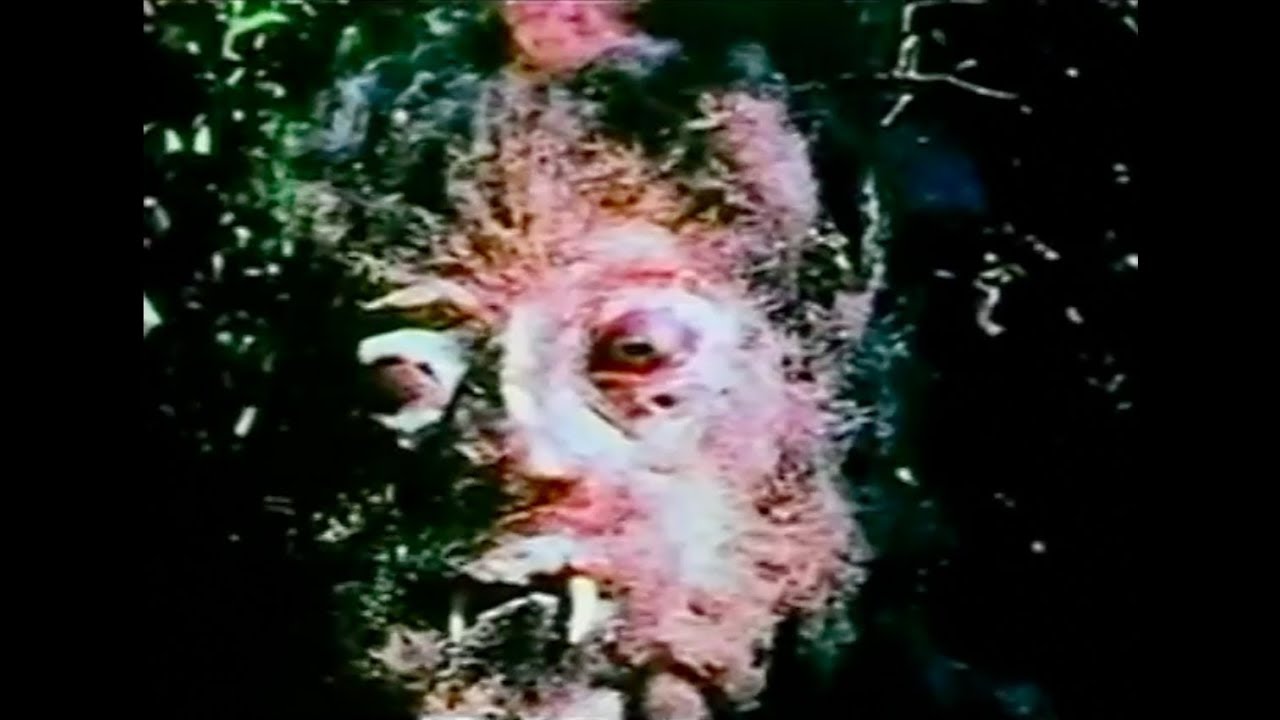
The Curse of Bigfoot (1975)
It was a banner year for Bigfoot films, and curiously this meant even TV got in on it by harkening back to some genre standards.
This one opens like Shriek of the Mutilated, with a professor lecturing his students about Bigfoot. Then another professor just wanders into the classroom and takes over (which seems pretty uncouth academic form if you ask me) to tell the students about his own encounter with Bigfoot six years earlier, essentially setting the story a year before the release of the first true Bigfoot film.
The rest of the film is told in flashback, and at that point it becomes a straight remake of Teenagers Battle the Thing.
So in other words, some smart cookie of a TV executive got it in his head to remake a no budget monster movie no one saw in the first place, slap “Bigfoot” in the title to tap into the national zeitgeist, and release it as a supposedly original feature for Saturday night viewing for the whole family.
In the flashback, Professor Bill Wyman (Bill Simonsen) brings a carload of students into the woods to go on a spelunking expedition. While exploring a cave, they come across what appear to be the mummified remains of a couple of Bigfeet. They quickly rig up some ropes and pulleys to carefully remove one of the bodies from the cave, then toss it in the back of the station wagon and speed off for town. Things don’t go well after that.
The ‘70s offered up any number of well-made and honestly effective made for TV horror movies: Don’t Be Afraid of the Dark, The Night Stalker, The Norliss Tapes, and on and on. Even if director Dave Flocker’s second and final effort as director isn’t among them, I still have a soft spot for this one, though lord knows why. The lighting is harsh, the camera work is clumsy, the acting is only the tiniest step above what we saw in Boggy Creek, and the less said about the makeup effects the better. On top of it all, it’s a fucking remake of a miserable drive-in flop. But y’know, it works for me.
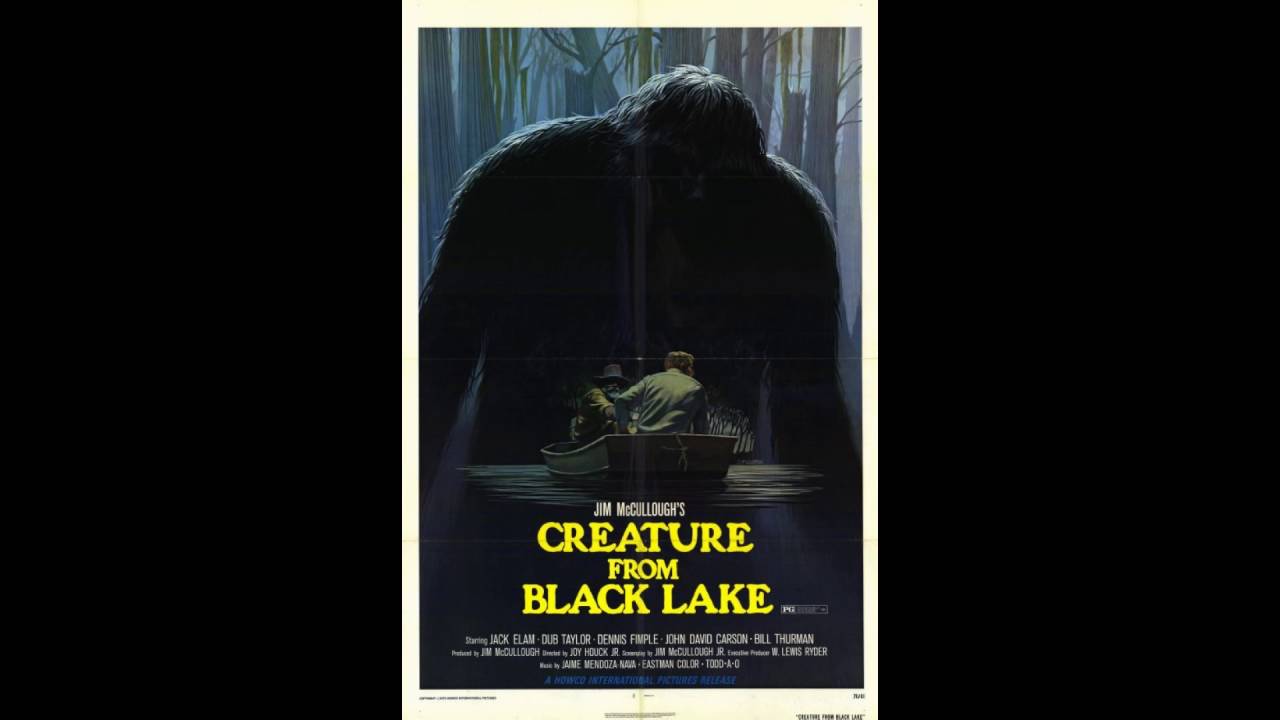
The Creature from Black Lake (1976)
In simple technical terms, director Joy N. Houck Jr.’s Creature from Black Lake is likely the high-water mark of the Golden Era. Houck was better known as an actor than director, and most of his directorial efforts were less than memorable, making this a double standout. What’s more, little seen as it is, much more than any of its 1970s companions, Black Lake presented the basic framework for any number of the entries that would follow in the third generation of Bigfoot films.
After hearing stories about sightings of a Bigfoot-type creature in the Louisiana Bayou, two college buddies decide to take a camping trip to see if they can track it down. While there they meet some girls, their enthusiastic college boy antics win them few friends among the locals (who don’t care to hear anymore monster stories as it is), and they win even fewer friends among the skunk ape community.
A very well made and fast-paced B film with some decent effects, a hint of mystery, and some fine performances from a number of recognizable character actors. Jack Elam may be playing the standard Jack Elam role here, but it’s one of the few examples I can think of where we get to see the great Dub Taylor get really, really mad. And I’m telling you, a really mad Dub Taylor is scarier than any old dumb skunk ape.
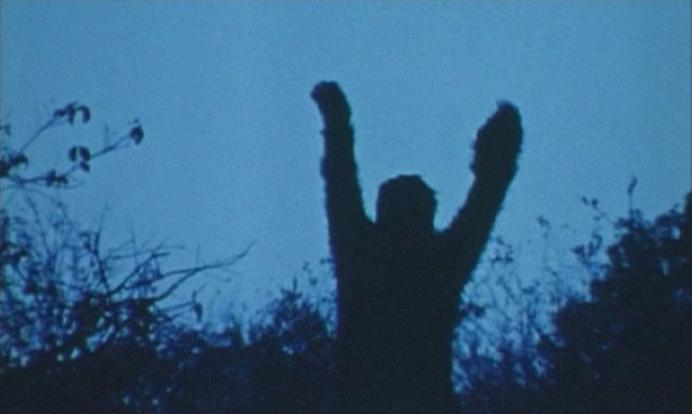
Sasquatch: The Legend of Bigfoot (1976)
Although sometimes titled Sasquatch: The Search for Bigfoot to avoid confusion with the previous year’s Legend of Bigfoot, Ed Ragozzino’s docudrama is nevertheless still very easy to confuse with the previous year’s film. The big difference to keep in mind while watching one or the other is that Sasquatch has a larger cast, they’re all actors, and the story is as fictional as anything in The Mysterious Monsters. The other major difference is that while in the earlier documentary Bigfeet are presented as a small tribe of peaceful, happy-go-lucky missing links who just want to be left the hell alone, in the latter they’re pretty darn ornery, with no goddamn patience at all for these interlopers.
That said it’s some mighty slow going, with the standard interminable tree shots as a group of researchers ventures into the woods to see what they can find. The film’s highlight comes when they stop by a logging camp where a number of the loggers have reported sightings. The loggers themselves are far more interesting than the scientists, and we get an extended flashback about the night a couple Bigfeet lay siege to their cabin. Even if it is a scene lifted wholesale from Boggy Creek, here it’s done far more effectively. Still a whole lotta trees though.
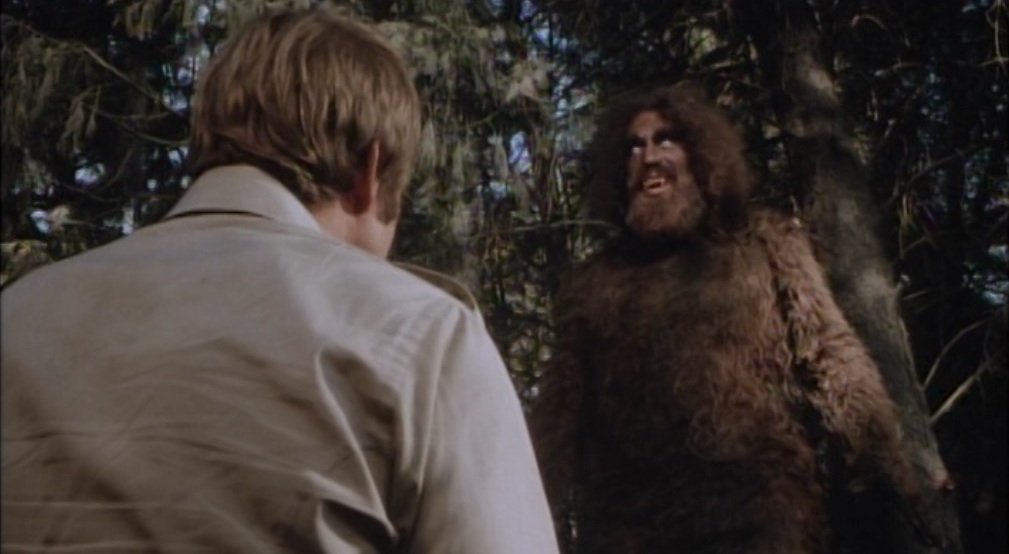
The Six Million Dollar Man: The Secret of Bigfoot (1976)
By the third season, Steve Austin’s slow-motion superhuman heroics were growing a little tired, so it was clearly time to jump the shark. Now in 1976, if a show’s producers wanted to jump the shark they did it in one of two ways: Either they brought in a shark, or they brought in Bigfoot. Here the producers went with the latter.
The result was not only the most-hyped and most memorable two-part episode of the entire series; it was also Andre the Giant’s most memorable acting role.
So when a couple of Steve’s seismologist friends go missing while planting sensors along a fault line in Northern California, and when furthermore giant humanoid tracks are found in the area, it doesn’t take long to put two and two together, and the world’s first bionic man goes Bigfoot hunting.
There’s so much weirdness crammed into this two-parter it’s impossible to touch on it all. Andre the Giant makes for quite the believable Sasquatch, and in part two, when we learn he’s not only a bionic creature himself but one created and controlled by aliens, well, it’s quite a shocker to most eight-year-old viewers. The funny thing is that the notion that Bigfoot was placed here and is controlled by aliens is one that’s been adopted by some of your more koo-koo members of the cryptozoology crowd. You wouldn’t believe how mad they get when I point out they stole the idea from the fucking Six Million Dollar Man.
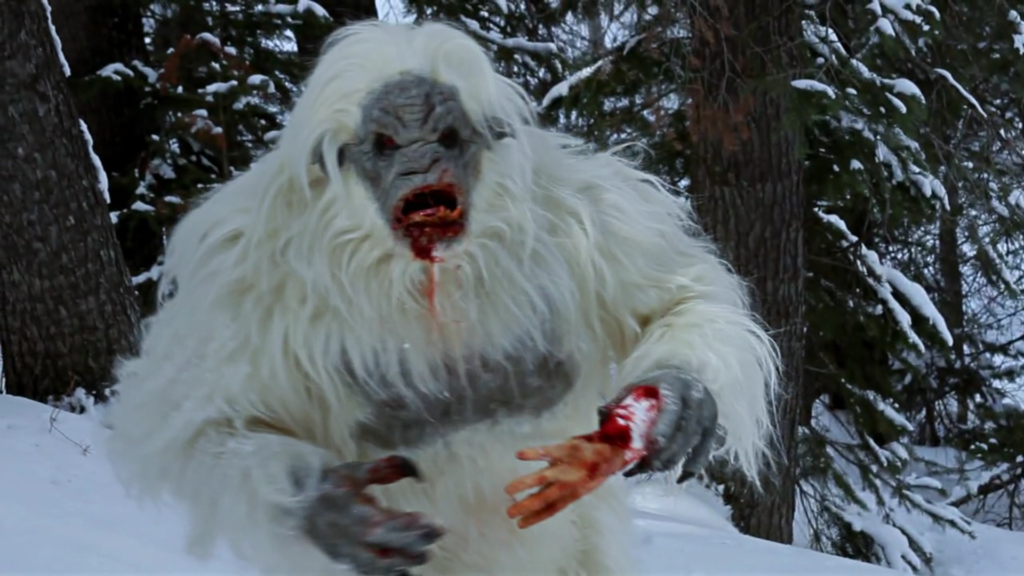
Snowbeast (1977)
If William Girdler’s 1976 quickie, Grizzly, was just a cheap Jaws rip-off, Herb Wallerstein’s 1977 made-for-TV quickie is a cheap Grizzly ripoff. All he really did in the end was simply switch out the campground for a ski resort and the bear for the monster from Shriek of the Mutilated. This is doubly disappointing when you consider it was written by Joseph Stefano, the same man who’d written Psycho and created The Outer Limits.
But Stefano wasn’t the only one involved in the production who was on the skids. The cast was swimming with them, from Clint Walker and Yvette Mimieux to Sylvia Sidney and Bo Svenson. Granted noir legend Sylvia Sidney was appearing in a whole lot of miserable crap in those days, but Svenson was still riding that Walking Tall ticket, so who knows? Most of them shamble through this looking a bit sheepish as they try to figure out exactly which sins they were being punished for.
Anyway, Svenson plays a down on his luck former Olympic skier who tries to call in a favor from an old friend who works at a ski resort. Meanwhile Sidney, who owns the resort, is prepping for a big winter festival. And the sheriff, Clint Walker, is trying to figure out why so many skiers are going missing or being torn to pieces on the slopes.
Because Wallerstein clearly knew his monster costume was kind of a hoot, he keeps it hidden for the entire film, save for a two-second shot at the very end. To fill in the rest of the film, he relied on Girdler’s well-worn trick of focusing on the victims’ terrified responses and a quick cut of a clawed and furry paw. Along with the interminable tree shots, he also pads things out with interminable skiing shots, which are even worse.
As for the rest of the story, if you’ve seen Grizzly, or any Jaws rip-off, you pretty well know how it plays out.
Return to Boggy Creek (1977)
In the ‘90s, Tom Moore was an in-demand television director who worked on every hit show the networks had to offer. But in 1977, he made his directorial debut with this sort-of Bigfoot movie, and afterward no one let him near a camera for almost a decade. Imagine that.
Charles B. Pierce had nothing at all to do with this erstwhile sequel to his 1972 hit, and in fact the film itself has nothing to do with anything that happened in the original. Return to Boggy Creek plays much more like a Disney live-action film from the era (think Escape to Witch Mountain) than any kind of horror film. But it’s even a step down there, considering the top billed stars are Gilligan’s Island’s Dawn Wells and poor doomed Dana Plato, fresh off her screen debut in Exorcist II: The Heretic.
Okay, so a trio of hunters head into the swamps of western Arkansas to bag themselves a skunk ape. Unbeknownst to them, they are being followed by some kids. But wouldn’t you know it? There’s a hurricane headed their way!
Yes, well, a skunk ape does indeed make a brief appearance here, and he’s an awfully friendly fellow.
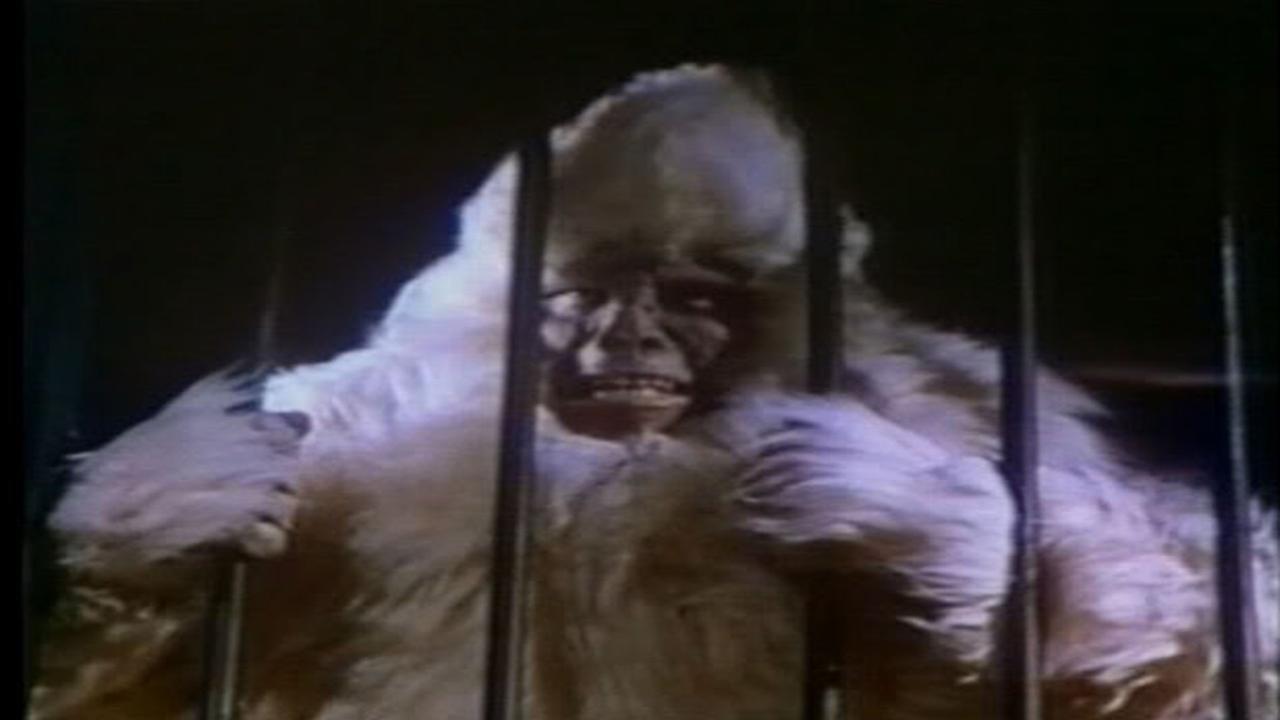
The Capture of Bigfoot (1979)
It was fast becoming clear that as subgenres go, Bigfoot Cinema was wearing out its welcome, but not before one last major entry.
Long before the Beast of Bray Road began cropping up in southern Wisconsin in the following century, Bigfoot sightings were fairly commonplace in the more densely wooded northern part of the state. Naturally, legendary Wisconsin-based indie filmmaker Bill Rebane, the man who’d given us The Giant Spider Invasion, decided to take a stab at the subject, closing out the Golden Era in the process.
Maybe it makes sense, then, that The Capture of Bigfoot would be such an amalgam of Bigfoot movie clichés. It opens, as most of them do, with a dreadful folk rock song about nature, which plays over lingering shots of trees (and it being Wisconsin, snow). Then we get a lot of lingering snowmobile shots. In fact, not a whole lot happens for a very long time until a couple of hunters accidentally trap a young Bigfoot, here known as Arak—believed by some to be the eternal guardian of sacred Indian burial grounds.
Well, if there’s a little one there must be a big one, right? So the wealthiest and most powerful man in town (an evil and cackling Richard Kennedy) gets it in his head to put out a bounty for the live capture of the elder Bigfoot, whom he hopes to turn into a local roadside attraction. Rebane here may well have been inspired by Honda’s Half Human, though without the style and philosophy.
For the film’s final quarter things become much more action-packed, complete with gunfire and explosions and a good deal of Bigfoot-related mayhem.
In the end, it wasn’t the greatest Bigfoot movie to come out of the Golden Era, but it was certainly better than some and likely wouldn’t have existed at all without everything that came beforehand. Those white-furred Bigfeet, though, always leave me a little cold.
After that, and with the public consciousness moving away from High Strangeness, things were quiet on the Bigfoot Cinema front for several years until Harry and the Hendersons came along in the late ‘80s, and the less said about that the better.
While it was easy to point to what triggered the first two eras, I can’t say what specifically led to the third, but beginning in the late ‘90s, there has been a massive explosion in Bigfoot Cinema, with over two dozen films and TV shows appearing over the past 20 years. We’ve gotten goofy comedies like 2003’s They Call Him Sasquatch, smug exercises in pop culture nostalgia like 2013’s Bigfoot (directed by and co-starring Bruce Davison), straight horror numbers like 2006’s Abominable and 2015’s Willow Creek, supposedly true stories like 2007’s The Wild Man of the Navidad, TV series like MonsterQuest, even Bobcat Goldthwait’s recent documentary short, American Bigfoot. And it shows no signs of slowing. I have no idea why this is, but it seems that even without the slightest shred of definitive evidence, Bigfoot is one of us.
As a postscript, when Ray Wallace—the man whose 1958 story prompted the whole phenomenon—died in 2006, his family admitted the whole thing was a hoax perpetrated by Wallace, his brother, and a homemade set of large wooden feet. It didn’t matter.